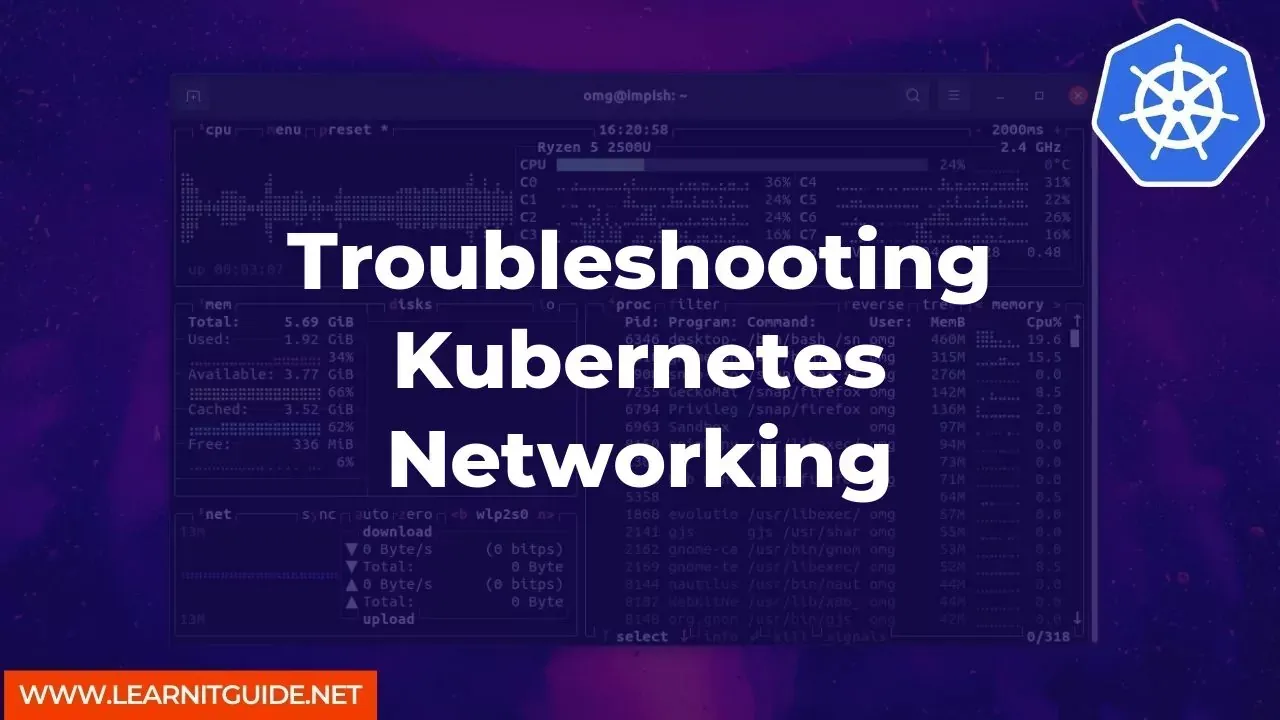Kubernetes is a popular container orchestration tool used to manage and deploy containerized applications. One of the most important aspects of Kubernetes is networking, which enables communication between various components of a cluster. However, networking issues can be challenging to diagnose and resolve.
In this article, we will discuss some common networking issues in Kubernetes and provide troubleshooting tips to help you resolve them.
- Verify Connectivity to the Kubernetes API Server
Before troubleshooting any networking issues in Kubernetes, it is essential to verify connectivity to the Kubernetes API server. You can use the kubectl command-line tool to check the status of the API server. Run the following command to check the status of the API server:
kubectl cluster-info
If the API server is not running correctly, you may see an error message that indicates the problem. You can also use the Kubernetes dashboard to check the status of the API server.
- Check Kubernetes Cluster Networking
Kubernetes networking involves several components, such as nodes, pods, and services. If networking is not configured correctly, it can cause communication issues between components. You can use the kubectl command-line tool to check the status of the cluster's networking components.
kubectl get nodes
kubectl get pods --all-namespaces
kubectl get services --all-namespaces
The above commands will provide you with information on the nodes, pods, and services in your Kubernetes cluster. If you notice any issues with networking components, you may need to troubleshoot further.
- Verify Pod Networking
Pod networking is a critical component of Kubernetes networking. It enables communication between pods in a cluster. If there are any issues with pod networking, it can cause communication issues between components.
You can use the kubectl command-line tool to verify pod networking.
kubectl describe pod <pod-name>
kubectl exec -it <pod-name> -- /bin/bash
The above commands will provide you with information on the pods in your Kubernetes cluster. You can also use the kubectl exec command to access the container inside the pod to verify the network connectivity.
- Check Network Policies
Kubernetes allows you to define network policies to control traffic flow between pods. If network policies are not configured correctly, it can cause communication issues between components.
You can use the kubectl command-line tool to check the network policies in your Kubernetes cluster.
kubectl get networkpolicy --all-namespaces
The above command will provide you with information on the network policies in your Kubernetes cluster. If you notice any issues with network policies, you may need to troubleshoot further.
- Verify DNS
DNS is essential for communication between components in a Kubernetes cluster. If DNS is not configured correctly, it can cause communication issues between components.
You can use the kubectl command-line tool to verify DNS in your Kubernetes cluster.
kubectl run busybox --rm -ti --image busybox --restart=Never -- nslookup kubernetes.default
The above command will provide you with information on the DNS in your Kubernetes cluster. If you notice any issues with DNS, you may need to troubleshoot further.
So, troubleshooting networking issues in Kubernetes can be challenging, but by using the commands and tips provided in this article, you can diagnose and resolve networking issues in your Kubernetes cluster. Remember to verify connectivity to the Kubernetes API server, check Kubernetes cluster networking, verify pod networking, check network policies, and verify DNS.
Related Searches and Questions asked:
That's it for this post. Keep practicing and have fun. Leave your comments if any.








0 تعليقات